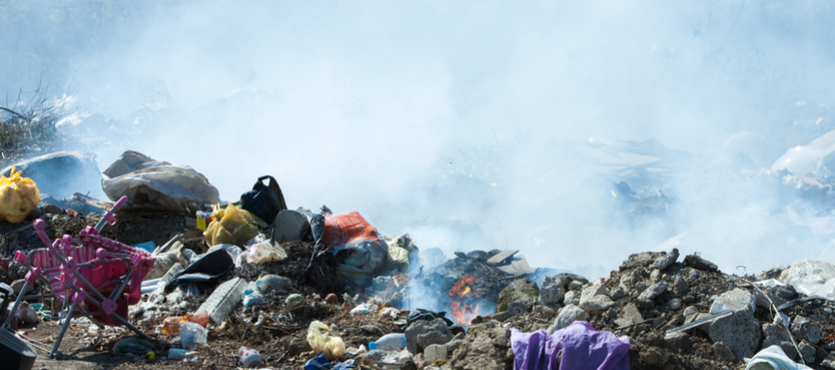In response to growing evidence of serious harm, the Defense Inspector General said it will look into the legality of burn pits in Iraq, as well as contractor oversight in this area.
For years, many advocates have called for increased oversight and investigation in this area. They charge that burn pits are illegal, and that the contractors who maintain them have too much latitude. So, in August 2010, the DIG said it would examine both areas. “Robust oversight of these contractors is essential for protecting the health and well-being of all who work and live near these installations,” remarked Rep. Carol Shea-Porter (D-NH).
The DoD insists that burn pits are safe and operate in conformity with existing Environmental Protection Agency standards for respiratory and overall health.
Burn Pit Injuries
In many cases, desert environments are good for respiratory systems. The dry air has drawn many Americans to the Desert Southwest, especially before medicines were widely available. In other cases, the dust and other particulate matter, combined with the extreme heat, causes a number of problems. Combat stress and what doctors used to call nostalgia (extreme homesickness) makes these problems worse.
Even the worst conditions do not explain the prevalence of serious lung diseases among returning Iraq War veterans. Moreover, many of these individuals served not in sandy deserts but in mountainous regions or urban areas. Clearly, something else made these veterans sick.
There is mounting evidence that open-air burn pits were that “something else.” The Labor Department, which administers the Defense Base Act, has already acknowledged this link. But for some reason, lawmakers and the Veteran Administration are still in denial.
Deployment-related Bronchiolitis is one of the most common serious burn pit injuries. It triggers congestion and inflammation in the lung’s bronchiole passages. These tiny airways are critical to overall lung health. DRB is difficult to diagnose. The initial symptoms do not include shortness of breath, coughing, or other maladies traditionally associated with lung disease. By the time labored or fast breathing appears, the disease may already be in an advanced stage.
DRB is usually not fatal. However, it often has serious complications. Dehydration, oxygen deprivation, and other maladies can make it impossible to function well in everyday life. Furthermore, although many treatments are available, DRB basically has no cure.
Scientists have also linked burn pits to various kinds of cancer. In many U.S. states, if firefighters develop cancer, there is a presumption that toxic smoke caused it. Many of these same toxins were identified in a sample of burn pit air. Some chemicals include:
- Hydrocarbons,
- Furans,
- Harmful organic compounds, and
- 2, 3, 7, 8-TCDD.
TCDD jumps off the list. This compound is one of the strongest known dioxins. The Vietnam War-era defoliant Agent Orange contained high levels of 2, 3, 7, 8-TCDD. After years of denials, the Veterans Administration finally acknowledged what everyone else knew, viz, Agent Orange caused cancer.
If caught early enough, cancer is usually treatable with a combination of radiation treatments to shrink the tumor, surgery to remove all or part of it, and chemotherapy to kill cancer cells. But early detection is the key. Without apparent risk factors, like lifestyle, age, and family history, most doctors do not diagnose cancer. Some doctors do not even test for it.
Compensation Available
The Defense Base Act pays for reasonable medical expenses. Generally, the DBA insurance company pays these costs directly and injured victims never see bills. So, victims get the treatment they need as opposed to the treatment they can afford.
But recovery from illness starts before the doctors begin their work. As mentioned, accurate diagnosis is critical in burn pit-related illnesses like cancer and DRB. Under the Defense Base Act, victims may chose their own doctors. So, instead of a family physician or general practitioner, victims may consult doctors who are experienced in these matters. As a result, it is much easier to diagnose diseases early. So, more successful treatment options are available.
The DBA covers more than just hospitalization. The benefits also apply to physical therapy. That is very important in situations like brain cancer. In brain damage cases, physical therapy progress is often uneven. So, covering the cost is only part of the equation. Victims also need assertive advocates who can keep the money flowing even when progress stalls during recovery. In these cases, many insurance companies unilaterally declare that the victim cannot improve further. Their lawyers then try to pull the plug on funding.
The same process applies with regard to trauma injuries, like falls and gunshot wounds. The DBA covers expenses like:
- Emergency care,
- Follow up treatment,
- Medical devices,
- Transportation expenses, and
- Physical therapy.
Insurance companies often argue that the treatments were not medically necessary. Many times, the proof is in the pudding. If the victim improved, the treatment was obviously necessary. Other times, attorneys partner with independent medical experts who vouch for the treatment the victim received.
For more information about the DBA process, contact Barnett, Lerner, Karsen & Frankel, P.A.

